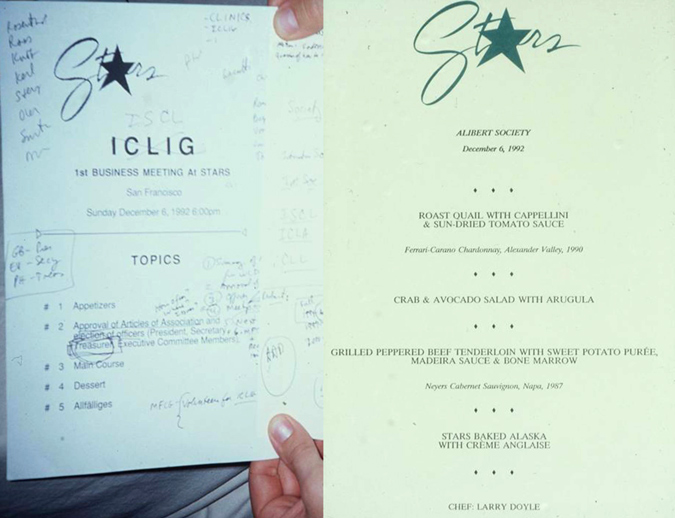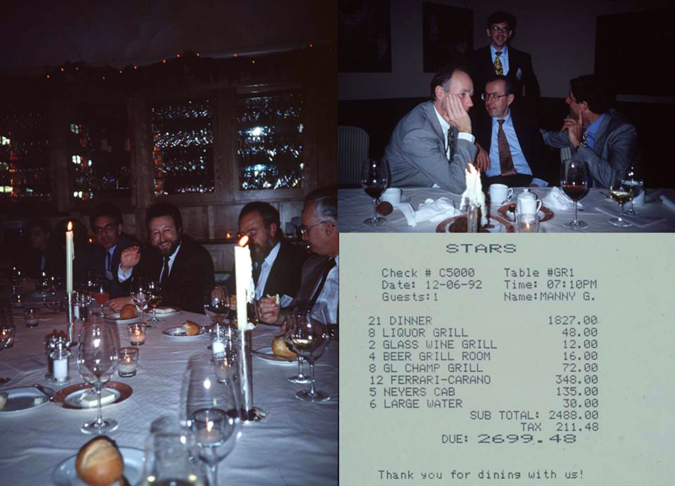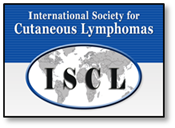THE HISTORY OFA FINE SOCIETY
By Günter Burg, MD and Eric Vonderheid, MD
Cutaneous lymphomas have distinctive clinical and pathologic features that deserve special consideration. Therefore, many regional or national societies dealing with cutaneous lymphomas were started in many countries, and several international symposia were held on this subject. In June 1992, at the World Congress of Dermatology in New York, some specialists with interest in cutaneous lymphomas felt it was time to organize an umbrella organisation in order to facilitate sharing of information and coordinate activities in this field worldwide.
The first informal meeting of this "International Cutaneous Lymphoma Interest Group" took place in a little café in downtown New York City and was followed by the first formal meeting on December 6, 1992 in conjunction with the 51st Annual Meeting of the American Academy of Dermatology in San Francisco in a location thought to be appropriate for the event: Stars Restaurant. This restaurant, closed in fall 2004, at that time claimed to be the San Francisco place to see and to be seen and where "High society comes to mind as you walk through this chic, always bustling restaurant and bar." A total of 21 "founders" and protagonists (alphabetical order, two names missing in the list) considered the place appropriate for their gathering together in a historical event.
- Günter Burg
- Sergio Chimenti
- Benvenuto Giannotti
- Peter Heald
- Helmut Kerl
- Robert Knobler
- Jose Diaz-Perez
- Katty Peris
- Nicola Pimpinelli
- Donald Rosenthal
- Roos
- Neil Smith
- Pierre Souteyrand
- Wolfram Sterry
- Kristian Thomsen
- Ramón Torné
- Ralph Trüeb
- Willem VanVloten
- Eric Vonderheid


The topics dealt with between appetizers and main course were (photo, top):
- Approval of Articles of Association
- Election of Officers
- President
- Secretary
- Treasurer
- Representatives of the participating groups and countries respectively
The dinner was excellent, the conversation highly intellectual, the Neyers Cabinet Sauvignon 1987 from Napa-Valley helped to make quick decisions, and everything went smoothly – until the bill arrived (photo, bottom). It included some very special cocktails and cigars and had to be paid on a common sharing basis per participant. Before denunciating this crapulous Symposium (ancient Greek: συμπόσιον "symposion"), one should consider the historical impact of the event featuring the birth of a fine Society.
Despite this temporary setback, the early organization started very well due to the commitment of many experts and interest groups worldwide, which had met at least once a year, usually in conjunction with the annual meeting of the American Academy of Dermatology (AAD). Initial efforts were focused on membership recruitment and developing an Internet-based registry of cases. Ultimately, the Interest Group was renamed from "International Cutaneous Lymphoma" Interest Group (ICLIC) to the "International Society of Cutaneous Lymphomas" (ISCL), and the logo was designed by Eric Vonderheid.
In addition to annual meetings of the ISCL at the AAD, major scientific meetings were organized together with or within the program of the World Congress of Dermatology meetings, which took place in Sydney, Australia (June 1997), Paris, France (July 2002) and Buenos Aires, Argentina (October 2007); and the International Investigative Dermatology meetings in Cologne, Germany (May 1998), Miami, Florida (April 2003) and Kyoto, Japan (May 2008). Although medical oncologists and other specialties with expertise in cutaneous lymphoma were encouraged to join the ISCL, the practical necessity of holding meetings at dermatology venues has limited participation of non-dermatologists.
Some accomplishments of the ISCL-sponsored workshops were comparison of different methods to quantify skin tumor burden in cutaneous T-cell lymphoma (CTCL), a consensus report on terminology and hematologic criteria for use in patients with erythrodermic CTCL, a scoring system for diagnosis of clinically typical mycosis fungoides, and a consensus report on staging and classification of CTCL. These workshops and meetings were made possible by unrestricted educational grants from several corporate sponsors.
